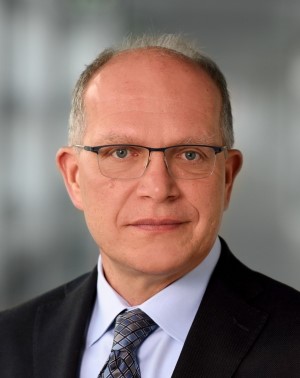
Chair of Structural Dynamics and Earthquake Engineering, ETH Zürich
Actionable Resilience
Presented by Božidar Stojadinović Chair of Structural Dynamics and Earthquake Engineering, Department of Civil, Environmental and Geomatic Engineering, ETH Zürich
Date: Friday, April 5, 2024
Time: 1:50 – 2:40 p.m. CST
Location: HEB 110 Texas A&M University
Abstract: The US Community Disaster Resilience Zoning Act is a clear call to civil engineers to act on community resilience. Are we ready to engineer communities for more resilience? In this talk, I will argue that we are. I submit that we can build on the methods and practice of performance-based design to develop the principles, methods, and practice of resilience-based design and, thus, make resilience actionable. Performance-based design (PBD) in general, and specifically seismic PBD, advanced significantly in the past four decades. PBD facilitates a risk-informed tradeoff between the engineering characteristics of the structure, the damage states it may undergo during an earthquake, and its life-cycle costs from construction to repairs after earthquakes. PBD saves lives in catastrophes: however, events in the past decade showed the increasing relative importance of the functional recovery of structures after earthquakes. Functional recovery of a building in a city after a disaster does not happen in a vacuum. First, there are many simultaneously recovering buildings in the affected region sharing the recovery resources. Second, the infrastructure systems that support the functions of a structure need to recover their own functions after a disaster, too. These interdependencies make the transition from designing single structures to be safe and functional to designing communities and cities to be more resilient quite challenging. Modeling, analyzing and quantifying the disaster resilience of cities is the basis for resilience-based design (RBD). The recently developed software, such as pyrecodes and IN-CORE, build on vulnerability models buildings and infrastructure systems components, add the notion of functional recovery, and, crucially, model a city as a system-of-interdependent-systems. These systems are the infrastructures systems, the portfolios of buildings that provide housing for the population as well as spaces for learning, working and societal interaction, and the recovery resources fielded by the community in the recovery effort. This NIST Community Resilience Planning Guide encapsulates the resilience metrics and the design objectives’ structure to define RBD. In this talk I will connect seismic PBD of buildings to seismic RBD of cities, and address quantifying resilience, modeling the community systems and interdependencies, and analyzing the recovery process to constitute the set of engineering methods and tools for resilience-based design of communities.
Biography: Dr. Božidar Stojadinović is the Chair of Structural Dynamics and Earthquake Engineering at the Swiss Federal Institute of Technology (ETH)
Zürich and a member of the ETH Risk Center. After graduating from UC Berkeley with a PhD in 1995, he was a professor at the University of
Michigan and the University of California Berkeley before joining ETH in 2011. He is an ACI Fellow, and a recipient of the 2004 ASCE Walter
L. Huber Civil Engineering Research Prize and the 2017 ACI Chester Paul Siess Award for Excellence in Structural Research.
Professor Stojadinović’s main research is in the field of community disaster resilience, focusing on performance-based probabilistic resilience
evaluation and design of civil infrastructure systems, buildings and bridges. In his second research area, Professor Stojadinović is using
performance-based design principles to develop new response modification techniques, such as rocking, for seismic protection of civil
infrastructure assets and to develop new methods for seismic design of structures. His third research area is focused on multi-physics and stochastic
extensions the hybrid simulation method for evaluation of the response of civil structures to dynamic excitation using hybrid models. To date, he
published his work in more than 350 scholarly publications.
At ETH, Professor Stojadinović teaches courses on seismic design, structural dynamics and theory of structures. At the University of California
Berkeley and the University of Michigan he taught courses on design of steel structures, experimental methods, finite element methods, earthquake
engineering, statics and mechanics. To date, he graduated 43 doctoral students


